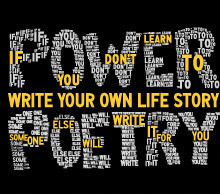The Nagas Bloody Path !
The Lim remained an endearing virgin,
Folksong echoed thro the hills and valleys.
War drums sounded, put forth the enemy's head, a trophy of bravery an act of courage.
Feasts in the Morung, Hailed the vict'ry songs.
.
As the hawk awaits for its prey, warriors of the East has its test.
Test of blood that held this land to death.
Fearing not the external foe's, warriors proved with the blood and bones.
Brotherhood was the bond, Rights to self-determination was the spirit then.
.
Failures in domination, paves the devil's blow,
'Divide and Rule', shattered the common goal.
Freedom and Birthright's turns a political mischievous.
Bloods afresh cries for justice, justice for freedom, and freedom from subjugation.
.
Lead forth the old torch, the torch of revolution.
Hundreds lost, ten thousands wept and the bloods rises.
Blow ye the Clarion's call, clarion of nationalism,
"The Nagas Bloody Path", all for the cause, surrender's a myth, integration a must.
(Loyem Haongang Chang).
